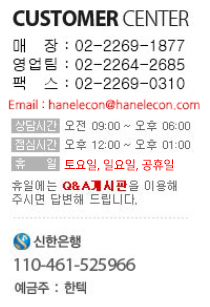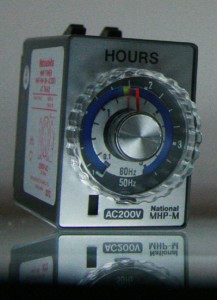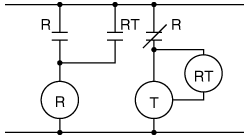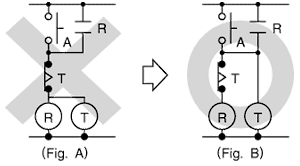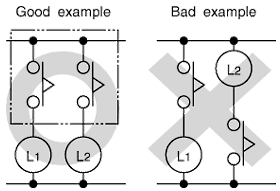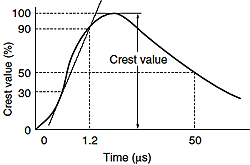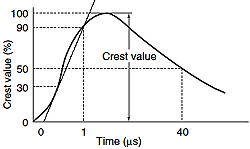1.Input connections (PM4H-A type)
- 1.Be sure not to use terminal (10) as the common terminal of the input signal as shown in Fig. A. Otherwise, the internal circuit of the timer may be damaged. Use terminal (2) as the common terminal as shown in Fig. B.
|
If the circuits is connected as in Fig. C,the internal circuits must be broken. Be sure to connect the circuit as in Fig. D. |
- 2.When one input signal is simultaneously applied to more than one timer, be sure to avoid the wiring shown in Fig. E.Otherwise, the short-circuit current will flow and cause damage. Be sure to align the polarity of the power supply as shown in Fig. F.
- 3.Terminal (2)-(6) (screw terminal [2]-[3]) should be connected as the start input. Connect terminals (2)-(7) (screw terminal [2]-[4]) for reset signal input. Connect terminals (2)-(5) (screw terminal [2]-[5]) for stop signal input. Be sure not to connect with other terminals and apply excessive voltage. The internal circuit will be damaged.
- 4.The input wiring other than the power supply circuit should avoid these conditions,high-voltage wiring and parallel wiring with power wire. Wire in short with using the shielding wire or metal wiring tube.
- 5.For start, reset and stop input, use gold-plated contact with high reliability. Since contact bouncing causes errors in the start, use an input contact less bounce time.
- 6.Keep the minimum signal input times over 0.05s.
2.Input signal conditions(PM4H-A type)
- 1.Connection of contact input (Pin type example)
Use gold-plated contacts with high-reliability. The bounce time at the contacts causes errors in the timer operation time. Accordingly, use start input contact whose bounce time is short. The resistance when shorted should be less than 1kohm;, and when open resistance should be more than 100kohm. For the screw terminal type, connect the terminal [2] to the each input signal.
- 2.Connection of contact input (Pin type example)
Apply the open-collector connection. The characteristics of the transistor used must be VCEO=10V or more, IC=10mA or more, and ICBO=6µA or less. Additionally, the input impedance must be 1kohm; or less, and the residual voltage must be 0.6V or less. For the screw terminal type, connect the terminal [2] to the each input signal.
- 3.Connection of non-contact input (Pin type example)(voltage input)
Even if the open collector is not used, input is also possible from the non-contact circuit of 6 to 30V DC. In this case, the start input is turned on when the signal is turned from H to L. The residual voltage must be 0.6V or less when Q is on. On the AC type, an insulated transformer is required as the power supply for the photoelectric sensor, etc. (power supply for the input devices).
| Keep the minimum input signal time of each signal to 0.05s or more. |
3.Checking the contacts before use (PM4H-F only)
When the power ON time is less than the minimum power application time, the contacts may remain in an ON state, so the state of the contacts should be checked before use. When the contacts are in an ON state, activating them once will return them to their normal state (the OFF state after time-out). (Be aware that relay characteristics may result in the contacts being in that same ON state if exposed to excessive vibration and impact during transport.)
4.Time setting
To set the time, turn the set dial to a desired time within the range. Instantaneous output will be on when the dial is set to "0". When the instantaneous output is used, the dial should be set under "0" range.(Instantaneous output area)
| Note) When power supply is on, the time range, setting time and operation mode cannot be changed. Turn off the power supply or a reset signal is applied to set the new operation mode.If the position is not stable, the timer might mis-operate. |
5.Superimposed surge of power supply (PM4H series common)
For the superimposed surge of power supply, the standard waveform is taken as the standard value for surge-proof voltage. If external surge occurs exceeding the specified value, the internal circuit may break down. In this case, use a surge absorption element.
| Operating voltage |
Surge voltage(peak value) |
100 to 240V AC
100 to 120V AC
200 to 240V AC
48 to 125V DC |
4,000V |
12V DC, 24V DC
24V AC/DC |
500V |
The positive and negative voltages are applied each five times between the power pins. The typical surge absorption elements include a varistor, a capacitor, and a diode. If a surge absorption element is used, use an oscilloscope to see whether or not the foreign surge exceeding the specified value appears.
6.Acquisition of CE marking
Please abide by the conditions below when using in applications that comply with EN61812-1.
1.Overvoltage category III, pollution level 2
2.This timer employs a power supply without a transformer, so the power and input signal terminals are not insulated.
- 1.When a sensor is connected to the input circuit, install double insulation on the sensor side.
- 2.In the case of contact input, use dualinsulated relays, etc.
3.The load connected to the output contact should have basic insulation.
This timer is protected with basic insulation and can be double-insulated to meet EN/IEC requirements by using basic insulation on the load.
4.Please use a power supply that is protected by an overcurrent protection device which complies with he EN/IEC standard (example: 250 V 1 A fuse, etc.).
5.You must use a terminal socket or socket for the installation. Do not touch the terminals or other parts of the timer when it is powered. When installing or un-installing, make sure that no voltage is being applied to any of the terminals.
6.Do not use this timer as a safety circuit. For example when using a timer in a heater circuit, etc., provide a protection circuit on the machine side.

